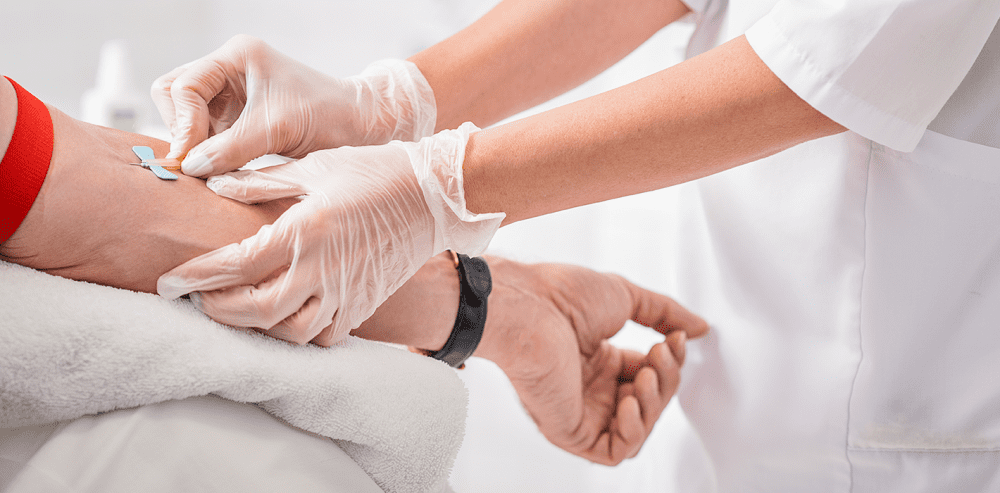PRP therapy offers a promising solution to accelerate healing naturally without subjecting the patient to significant risk. PRP is a treatment is a hew health sector known as “Orthobiologics”. The philosophy is to merge cutting edge technology with the body’s natural ability to heal itself.
PRP has been used in musculoskeletal medicine as early as the 1990’s, and since the 1980’s in surgical and dental procedures. Uses for PRP in musculoskeletal medicine include treatment of tendonopathy, tendonosis, acute and chronic muscle strain, ligament sprains and intra-articular injuries and joint pain. This modality may be used for chronic neck and low back pain (including post surgical pain). Joint conditions may include shoulder arthropathy, tennis elbow, degenerative or meniscal knee abnormalities or foot pain (including plantar fasciitis).
Blood is made of RBC (Red Blood Cells), WBC (White Blood Cells), Plasma, and Platelets. When in their resting state, platelets look like sea sponges and when activated form branches. Platelets were initially known to be responsible for blood clotting. In the last 20 years we have learned that when activated in the body, platelets release healing proteins called growth factors. There are many growth factors with varying responsibilities, however cumulatively they accelerate tissue and wound healing. Therefore after increasing the baseline concentration of these platelets, we are able to deliver a powerful cocktail of growth factors that can dramatically enhance tissue recovery. Most enticing, is that the technique appears to help regenerate ligament and tendon fibers.
The procedure is strikingly straightforward. First, a small amount of blood is drawn from the patient’s arm. The blood is then placed in a centrifuge that spins the blood for approximately 15minutes. This step removes the unwanted components of blood that are not primarily responsible for healing including: plasma. WBC’s and RBC’s. What remains is an increased concentration of up to 10x above baseline of platelets.
Under fluoroscopy the area of injury is properly identified and marked. The physician then performs the injection. The patient rests afterward for 5 to 10 minutes and is then discharged home with post procedural instructions. Patients are encouraged to participate in physical therapy following the injection which enhances recovery.
Because this substance is injected where blood would rarely go otherwise, it can deliver the healing instincts of platelets without triggering the clotting response for which platelets are typically known. This method is excellent for areas that are not well vascularized, like ligaments and tendons.
The benefits and socio-economic implications are obvious. Besides reducing pain and returning the patient to functionality more quickly, this procedure is a first option before surgery and may even obviate the need for surgery. There is little chance for rejection or allergic reaction because the substance is autologous, meaning it comes from the patient’s own body. The injection carries far less chance for infection than an incision. Of note, recent research suggests that PRP may have an anit-bacterial property which protects against possible infection. The procedure leaves no scar and takes only about 20 minutes, with a considerably shorter recovery time than after surgery. There is no down time for the patient. PRP therapy may replace cortisone shots which may cause damage over time. One study has shown that when comparing PRP and cortisone shots after 6 months those treated with PRP had less pain and gained more function.
Journel of Orthopaedic Trauma, July 2008 vol 22 No 6. “Platelet Rich Concentrate: Basic Science and Current Clinical Applications”
The Americal Journal of Sports Medicine, 009, Vol.37, No.6 “Use of Autologous Platelet-Rich Plasma to Treat Muscle Strain Injuries”
Jounal of the Americal Academy of Orthopaedic Surgeons, Oc.t 2009, Vol 17, No. 10 “Platelet-Rich Plasma: Current Concepts and Applications in Sports Medicine”
The American Journal of Sports Medicine. October 2009,Vo1.34, No. 11, “Treatment of Chronic Elbow Tendinosis with Buffered Platelet-Rich Plasma”
New York Presbyterian Hospital, October 15, 2009 “Platelet-Rich Plasma Therapy to Treat Sports Injuries.
New York Presbyterian Hospital, October 13, 2009 “Platelet-Rich Plasma Therapy Speeds Healing”


